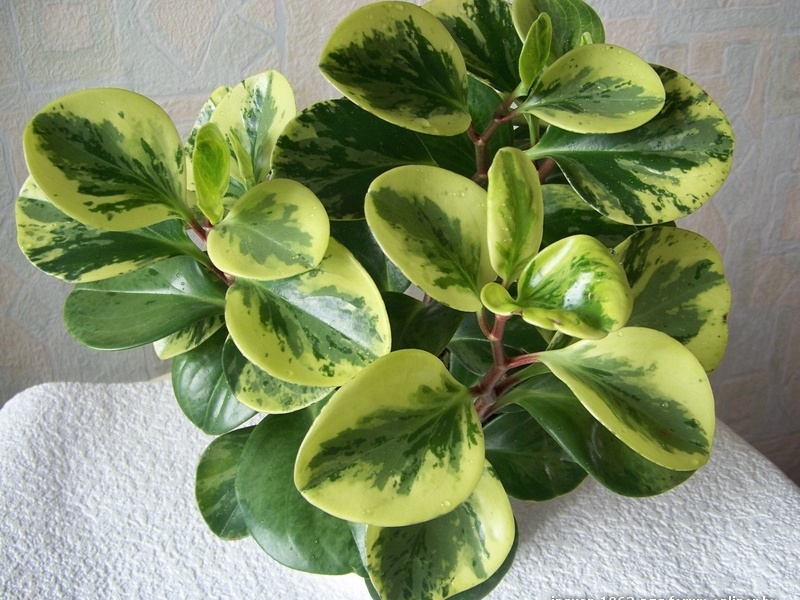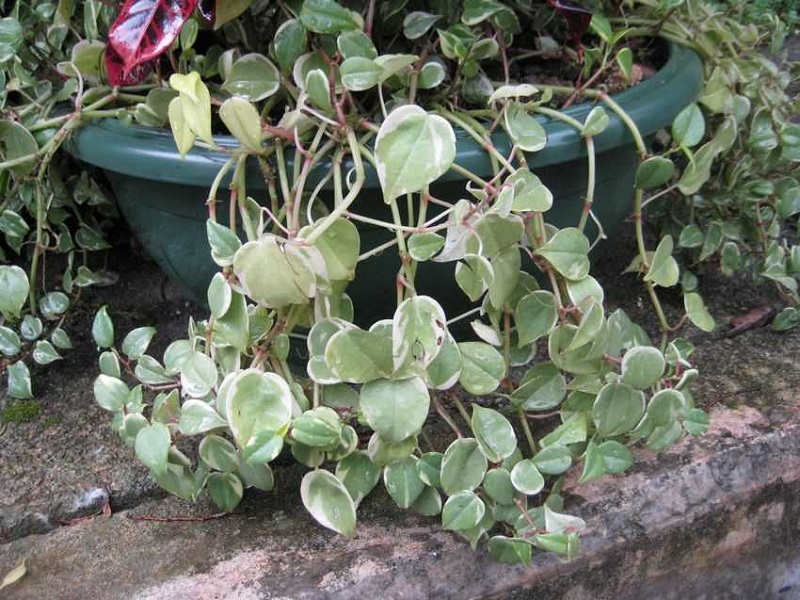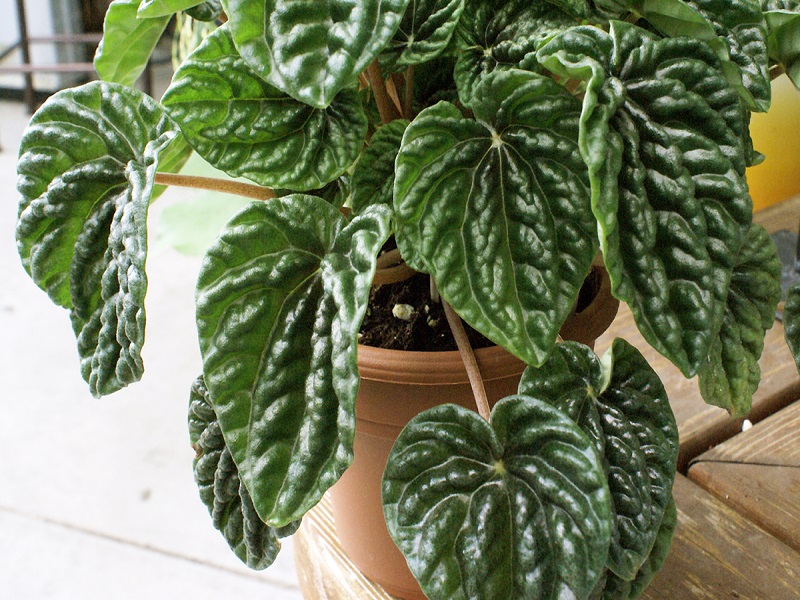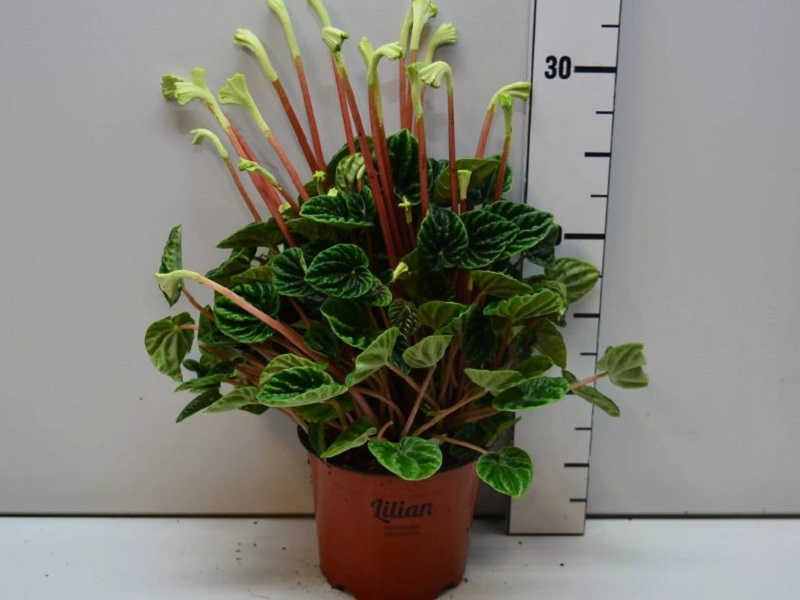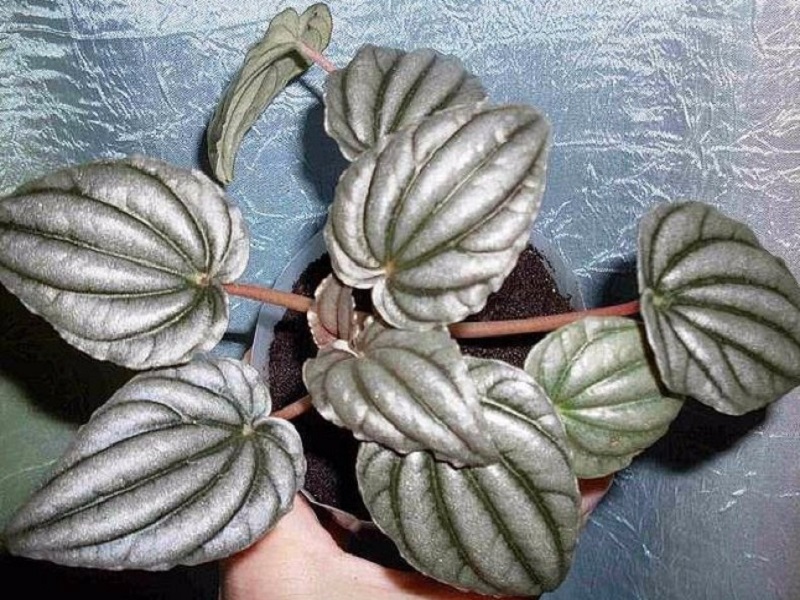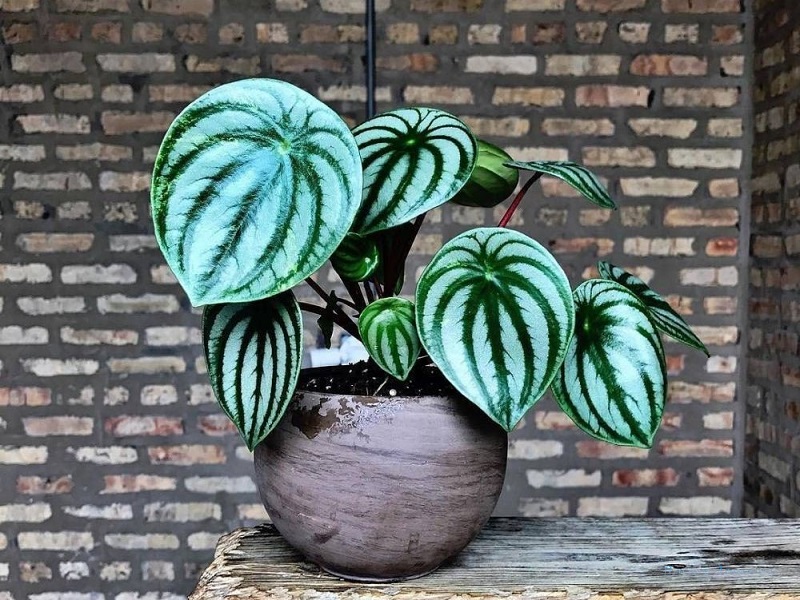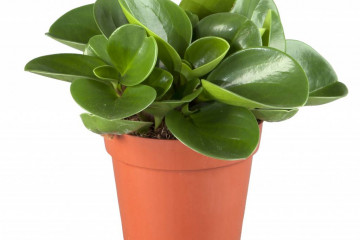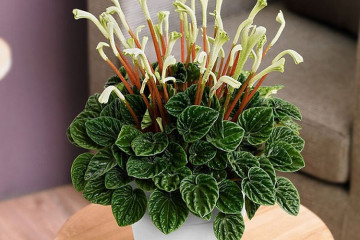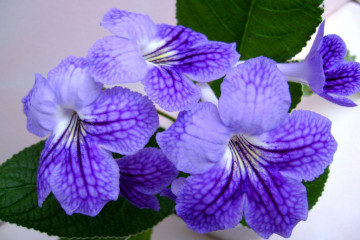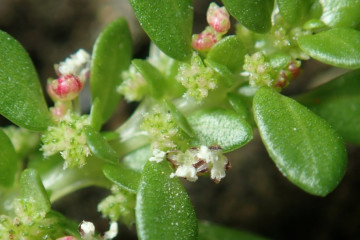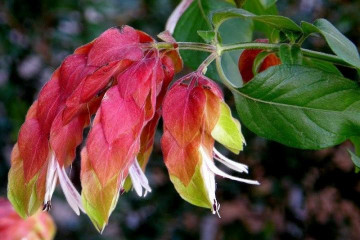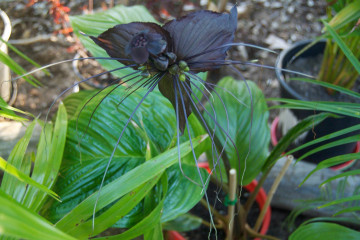Peperomia watermelon - home care
Content:
Among flower growers, watermelon peperomia is very popular. This is due to the fact that the plant has an original appearance, its leaves resemble everyone's favorite berry. The culture is unpretentious, easy to grow and care for.
What does it look like, which family it belongs to
Peperomia watermelon belongs to the Pepper family. It is a perennial evergreen crop. Flowers differ in varietal variety, so everyone can choose the perfect variety for themselves.
A common feature in all varieties is leathery shiny foliage, but it also differs in color and shape. In some species, the leaves are small and thin, in others, fleshy and wide plates with curled ends.
The variety of watermelon peperomia is easy to identify by its botanical description. No other crop has such remarkable leaves.
Common varieties
Peperomia is represented by a variety of varieties. The brightest representatives:
Variegated
The variety is distinguished by beautiful leaves with bizarre variegated colors and an unusual shape.
Climbing
The culture grows up to 1.5 meters in height. With age, the leaves of the bush change color from beige to cream. Indoor flowers are undemanding in care and maintenance.
Shriveled
A decorative culture that stands out from the rest by its miniature appearance. Adult bushes do not grow more than 10 cm. It blooms with white buds, emitting a unique aroma.
Lillian
A low-growing variety that has an external resemblance to lilies. After flowering, berries are formed on the plant.
Silvery
Popular view. It is appreciated for its beautiful light leaves with dark veins. In general, the plant has more than 30 varieties. Each of them differs in shape, size and characteristics in cultivation.
Healing properties
With regard to medicinal properties, it is generally accepted that peperomia has a beneficial effect on the health of the household. She is capable of:
- improve the functioning of the digestive system;
- normalize the condition of the biliary tract.
Briefly about the history of appearance
The homeland of watermelon peperomia is considered to be South and Central America, as well as India. It was there that this unusual flower was first discovered. Most often it can be found in tropical forests, it prefers to grow in shady undergrowth, as well as on tree trunks. The plant literally attaches itself to the bark.
Peperomia has the ability to accumulate moisture in its own leaves, which is why it can go without water for a long time.
Care features
Peperomia watermelon is an unpretentious culture. She does not require increased attention to herself. For these qualities, flower growers love her.
Temperature
For normal growth and development, the plant needs the right climatic conditions. A certain temperature regime must be maintained in the room, namely:
- in summer - 20-22 ℃;
- in winter - 18-20 ℃.
It is important to monitor the temperature of the substrate. It should not be lower than +17 ℃. In colder soil, the root system of peperomia is difficult to maintain viability.
Lighting
The culture prefers eastern and western windowsills. If the pot is on the south side, then the flower needs darkening.
In winter, on the contrary, the plant lacks light, so it will have to be artificially illuminated.
Watering
Irrigation water should be at room temperature. Abundant watering is carried out during the growing season and flowering, the rest of the time water is applied as usual. The main thing is not to allow the earth to dry out, this has a bad effect on watermelon peperomia.
Spraying
If the air in the room where the flowerpot stands is too dry, spraying is mandatory. Otherwise, the peperomia will begin to dry out. This should be done at least once every three days.
Humidity
A tropical culture needs high humidity. If this indicator is low in the house, then you will have to spray the bushes daily. A container with water, which is placed next to the pot, will help to correct the situation.
Priming
The substrate for peperomia should be loose, rich in nutrients. You can make it yourself from the following components:
- humus;
- garden land;
- sand;
- peat soil.
All components are taken in equal amounts. When choosing a flowerpot, preference is given to deep containers so that the root system feels free.
Top dressing
As for fertilizers, they are applied throughout the season, starting in April and continuing until the onset of autumn. Two dressings are carried out per month. For this, ready-made mineral complexes are suitable.
In winter, the flower is not fertilized, since it is dormant, nutrients can cause its activity. The plant will not be able to fully recover.
When and how it blooms
Each peperomia variety blooms in its own way. It is sometimes extremely difficult to achieve flowering. Some growers have been waiting for inflorescences to appear for years. In good conditions, inflorescences appear in late spring or early summer.
Types of flowers
During the flowering period, numerous buds appear on the shoot, reaching up to 7 cm in length. They look like a thin bent process.
Flower shapes
The shape of the buds directly depends on the variety. The shriveled one throws out the antennae, on which white cobs are later formed. The view pleases with buds throughout the year.
The whorled has a long peduncle. Chisel-shaped peperomias are covered with small white-green flowers in summer.
Flowering period
The ovary of inflorescences in a room culture begins in the spring and lasts all summer. Some representatives are able to bloom throughout the year without going into a dormant state. After that, the plant rests for several years.
Pruning
Prune the houseplant for sanitary purposes when it is necessary to remove dried shoots and malformed stems. Often, heavy branches break off and damage the stem and should be disposed of.
How watermelon peperomia reproduces
Reproduction of peperomia is carried out in several ways. The choice of method directly depends on the capabilities and experience of the grower. It is worth considering each option in detail.
Germination from seeds
Seed reproduction begins in early May. Before planting, the seeds are soaked. An hour later, they are laid out on the surface of a moist nutrient substrate and sprinkled with soil.
The container with the planting material must be covered with plastic wrap. This will provide a greenhouse effect. After 50-60 days, the first shoots will appear.
Rooting cuttings
The procedure is carried out in the spring. To do this, do the following:
- the shoot is cut off with a sharp knife, 2-3 independent buds should be present on it;
- planted in nutritious soil, covered with a plastic bottle;
- place the container with the handle in a warm place;
- after the formation of roots, they are planted in a separate pot.
Usually the whole process takes about a month. During this period of time, the root system has time to develop normally. Further, the flower is provided with standard care.
Other options
Some growers use leaves for propagation. They are simply stuck with an edge into the substrate, and covered with a plastic cup from above.
Another option is dividing the bush. For this, the plants are taken out of the pot, divided into several parts, and then seated in separate containers.
Transfer
The first transplant of peperomia is carried out for 3 years. Young bushes do not need this procedure. An adult plant is transplanted into a new flowerpot once every two years. The best time to do this is in April.
The event is held as follows:
- a drainage layer is laid in a flower pot so that liquid does not accumulate in the ground;
- a nutrient substrate is applied to 2/3 of the total volume of the pot;
- a plant is placed in the center and covered with earth;
- the soil is compacted and moistened.
Possible problems in the cultivation of watermelon peperomia
Flowers do not get sick as often if they are properly cared for. It is important to provide them with conditions that are as similar as possible to their natural environment.
Pests
Like any other vegetation, peperomia is attacked by harmful insects. Most often, flowers appear on:
- thrips;
- mealybugs;
- scabbards.
You can get rid of them with the help of insecticidal preparations.
To avoid problems in the future, it is necessary to carry out prevention. Examine watermelon peperomia bushes for pests. Most often they hide on the back of the sheet. For a small lesion, you can treat the plant with soapy water.
Other problems
Often, growers face problems when growing an indoor flower due to improper care. The plant begins to ache against the background of hypothermia or overmoistening of the substrate.
There are several external signs that an indoor culture needs something:
- falling leaves indicates a lack of moisture, it is necessary to increase the amount of moisture;
- a brown edging on the foliage indicates a low temperature in the room, the flower freezes;
- putrefactive foci - a clear sign of excess water in the ground;
- wrinkled leaves are a signal that there is not enough light in the room, it is worth moving the pot to a brighter place or installing additional lighting.
If at least one of the signs is observed, you should immediately take action: check the humidity in the room, eliminate drafts. You should carefully approach the care of watermelon peperomia at home.

